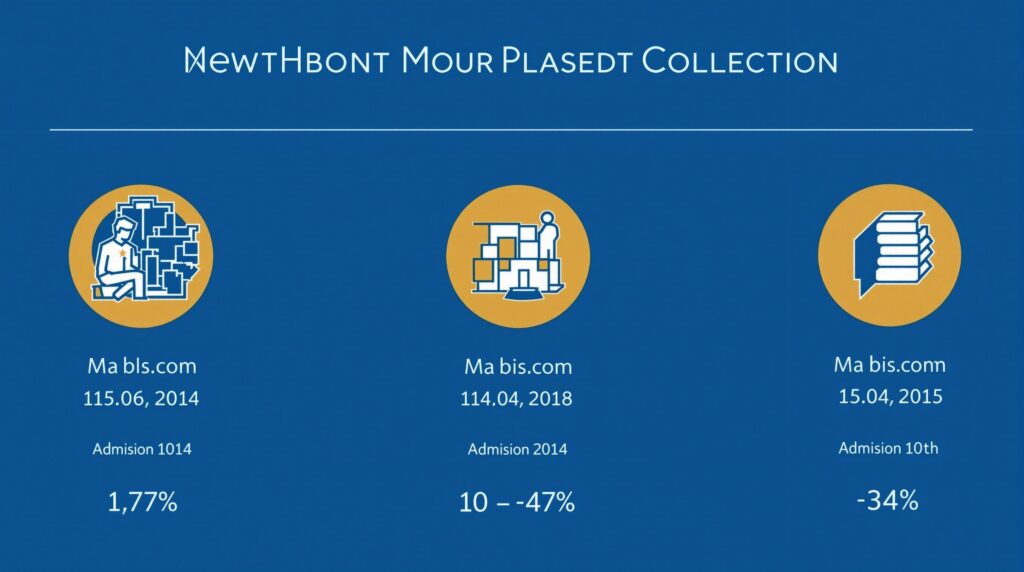Securing educational grants can be challenging, with success rates ranging from 10-30% depending on the funding source and program. However, understanding the specific requirements, developing strong grant writing skills, and targeting the right opportunities can significantly improve your chances of success in this competitive landscape.
Key Takeaways
- Educational grant success rates vary widely, with federal grants being the most competitive (10-15% approval rate)
- Private foundations and organizations often have less competition but more specific funding criteria
- A well-crafted proposal with clear objectives and measurable outcomes dramatically increases chances of funding
- Building relationships with grant officers prior to submission can provide valuable insights
- Persistence pays off – many successful grantees apply multiple times before receiving funding
The Reality of Grant Acquisition: Success Rates and Competition
How easy is it to get a grant? This question haunts many educators and institutions seeking funding. The answer varies based on several factors, including the type of grant, funding source, and your preparation level. Federal educational grants through the Department of Education or National Science Foundation typically have approval rates between 10-15%, making them highly competitive.
Private foundations often have higher approval rates (20-30%), but they usually fund specific initiatives aligned with their mission. Corporate grants may approve 15-25% of applications but frequently require business-education partnerships. Understanding these statistics helps set realistic expectations about the competitive nature of grant acquisition.
The competition for educational funding has increased in recent years, with more applicants vying for limited resources. This trend means that even well-written proposals may face rejection simply due to funding constraints. However, this shouldn’t discourage potential applicants – rather, it emphasizes the need for thorough preparation and strategic approaches.

Factors That Influence Grant Success
Several key factors determine whether your grant application succeeds or fails. The alignment between your proposal and the funder’s priorities stands as perhaps the most critical element. Grant reviewers look for proposals that directly address their organization’s mission and goals.
Your track record and credibility also significantly impact success rates. Funders prefer applicants with demonstrated experience in their field and a history of successfully managing similar projects or funds. First-time applicants can overcome this hurdle by partnering with established organizations or highlighting relevant qualifications.
The quality of your proposal makes a tremendous difference. Applications with clear objectives, detailed methodologies, realistic budgets, and concrete evaluation plans consistently outperform vague or poorly structured submissions. In competitive funding environments, even small errors or omissions can lead to rejection.
Some additional factors that influence success include:
- Geographic priorities of the funding organization
- Uniqueness and innovation of your proposed project
- Sustainability plan for continuing work after grant funding ends
- Evidence of community support or partnerships
- Demonstration of need through compelling data
Strategies to Improve Your Grant Success Rate
I’ve identified several proven strategies that can significantly boost your chances of securing educational funding. First, targeted research is essential – don’t apply to every available grant. Focus on opportunities that closely match your project goals and organizational strengths. Use grant databases and funding newsletters to identify the most relevant options.
Building relationships with program officers before submission can provide valuable insights. Many grant administrators are willing to discuss their priorities and offer feedback on your concept. This pre-submission guidance can help you craft stronger grant applications tailored to their specific requirements.
Partnering with other organizations can strengthen your application by bringing additional expertise, resources, and credibility. Funders often look favorably on collaborative approaches that leverage existing community assets and demonstrate broader support for your initiative.
Consider these practical steps to enhance your grant proposal:
- Start the application process early – rushed proposals rarely succeed
- Thoroughly follow all guidelines and submission requirements
- Include compelling data that clearly illustrates the need
- Develop a realistic budget with detailed justifications
- Create a strong evaluation plan with measurable outcomes
Common Mistakes to Avoid in Grant Applications
Even experienced grant writers make mistakes that can doom otherwise promising applications. One of the most common errors is failing to follow instructions precisely – from word counts to formatting requirements, every detail matters. Grant reviewers often use these technical requirements as an initial screening tool.
Many applicants submit generic proposals without customizing content for specific funders. Each application should address the particular priorities, language, and focus areas of the targeted grant program. Cookie-cutter approaches rarely succeed in competitive funding environments.
Vague objectives and evaluation plans represent another critical weakness. Your proposal must clearly state what you plan to accomplish and how you’ll measure success. Without specific, measurable outcomes, reviewers cannot assess the potential impact of your project.
Other common pitfalls include:
- Unrealistic budgets that don’t align with proposed activities
- Missing or incomplete supporting documentation
- Overuse of jargon or technical language
- Focusing too much on needs without proposing clear solutions
- Neglecting to explain how the project will continue after grant funding ends
Understanding Different Types of Educational Grants
Educational grants come in various forms, each with unique requirements and competitive landscapes. Federal grants typically offer larger funding amounts but face intense competition. These include Department of Education programs like Title I, IDEA, and various research grants through agencies such as NSF and NIH.
State-level educational grants often focus on implementing specific initiatives aligned with state priorities. These may be slightly less competitive than federal opportunities but still require thorough preparation and alignment with state educational goals.
Private foundation grants range widely in size and focus. Some major foundations like Gates, Ford, and Kellogg offer substantial funding for educational innovation, while smaller family foundations may provide more accessible entry points for new grant seekers. Researching foundation priorities through their websites and annual reports is crucial before applying.
Corporate grants represent another valuable funding source, particularly for programs that align with business priorities like STEM education, workforce development, or community engagement. These opportunities often receive fewer applications than government grants, potentially increasing your success chances.
To find the most appropriate educational funding opportunities, consider using these resources:
- Grants.gov for federal opportunities
- Foundation Directory Online for private foundation grants
- State department of education websites
- Professional associations in your educational field
- Corporate foundation websites for businesses in your area
Crafting a Winning Grant Proposal
A compelling grant proposal follows a clear structure with key elements that address reviewers’ primary concerns. The executive summary or abstract serves as your first impression – it should concisely present your project’s purpose, methods, expected outcomes, and requested funding amount.
The needs statement must convince reviewers that your project addresses a significant, well-documented problem. Use data and research to establish the scope and impact of the issue you’re tackling. Connect this need directly to your organization’s mission and capabilities.
Your project description should outline specific activities, timelines, and responsible parties. This section must demonstrate that you’ve carefully planned implementation details and considered potential challenges. Include a logic model that shows how your activities will lead to desired outcomes.
The evaluation plan often distinguishes successful proposals from rejected ones. Detail exactly how you’ll measure progress and results, including specific metrics, data collection methods, and analysis approaches. Funders want evidence that their investment will produce meaningful, measurable change.
Creating a successful grant proposal requires attention to these components:
- Organizational background that establishes credibility
- Clear goals and objectives using SMART criteria
- Detailed budget with narrative justifications
- Sustainability plan for continuing work beyond the grant period
- Appendices with supporting documentation (letters of support, research citations, etc.)
The Importance of Persistence in Grant Seeking
Grant seeking requires resilience and persistence. Many successful grantees face multiple rejections before securing funding. Each declined application provides valuable learning opportunities if you request and analyze reviewer feedback.
Developing a diverse funding strategy rather than relying on a single grant source increases your chances of success. Create a portfolio approach that includes various funding types and sizes, from major federal grants to smaller local opportunities.
Building your grant writing skills over time significantly improves success rates. Consider professional development opportunities like workshops, courses, or mentorship from experienced grant writers. Many funders offer technical assistance webinars specifically for their grant programs.
Remember that relationships matter in the grant world. Networking with funders, collaborating with partners, and participating in relevant professional communities all contribute to long-term grant success. These connections often provide insider knowledge about upcoming opportunities and changing priorities.
Finally, celebrate small victories along the way. Even if your first applications aren’t funded, recognize improvements in your grant writing skills and the valuable relationships you’re building. With persistence and strategic approaches, your chances of securing educational grants will steadily improve.


 Try Our Free Funding Tools & Calculators
Try Our Free Funding Tools & Calculators

